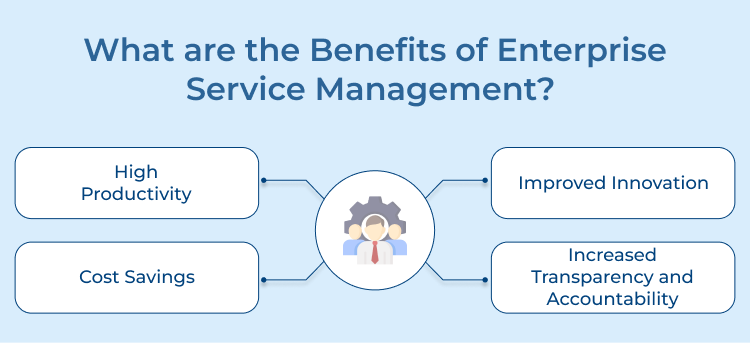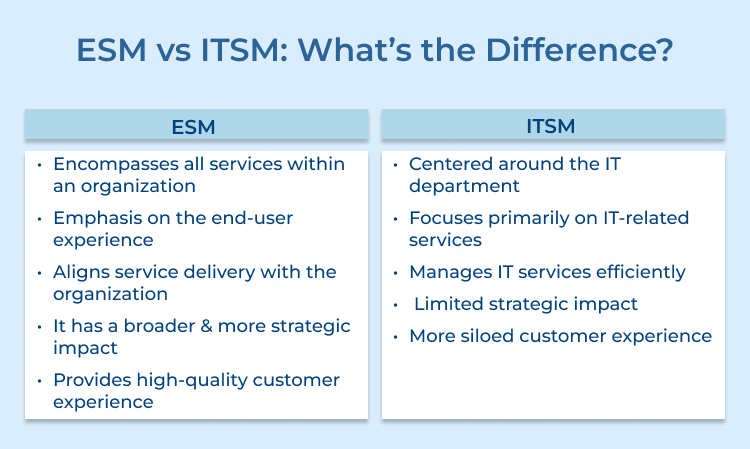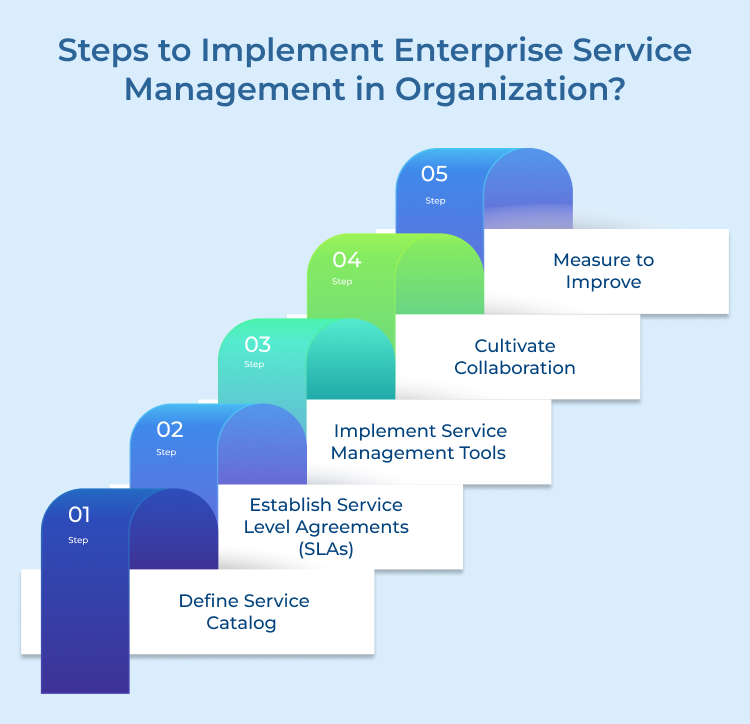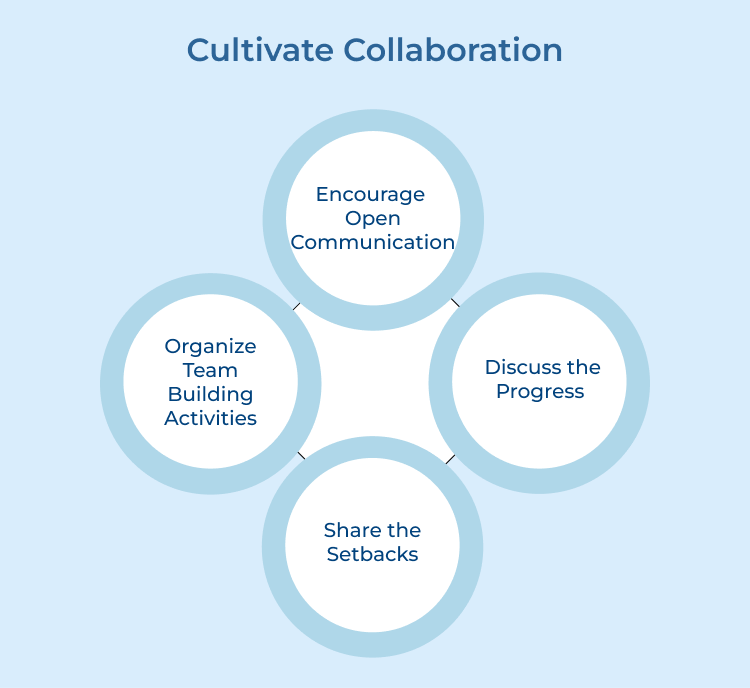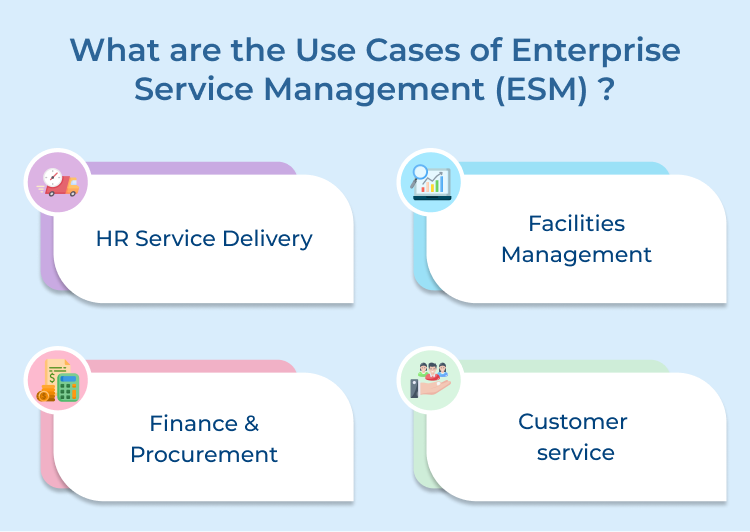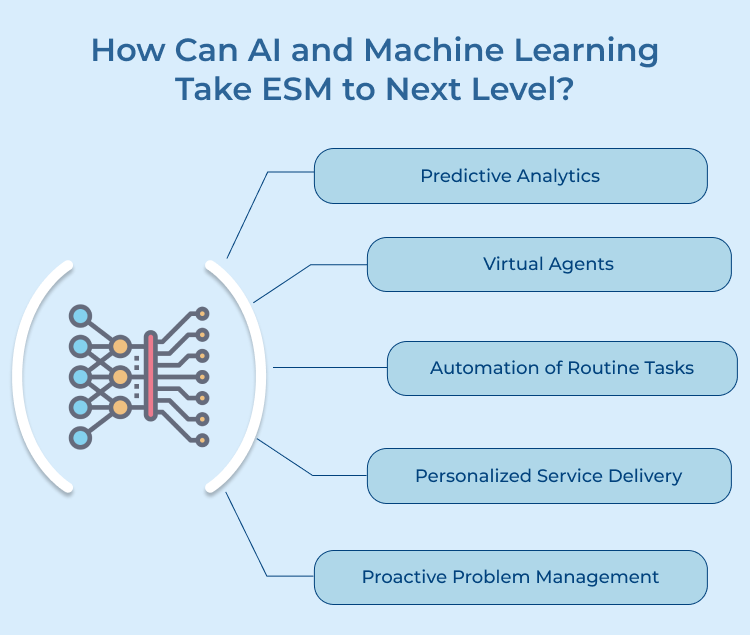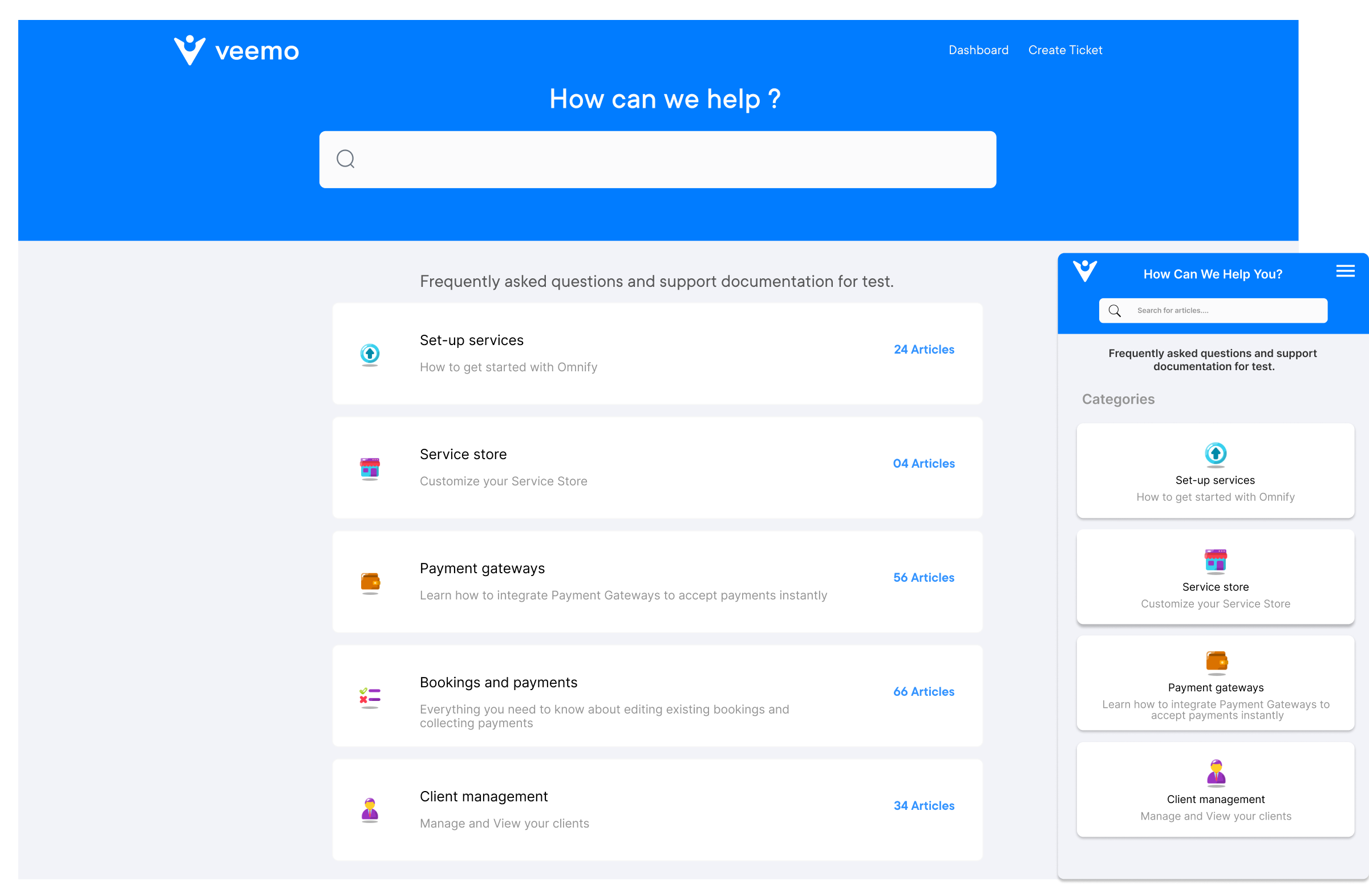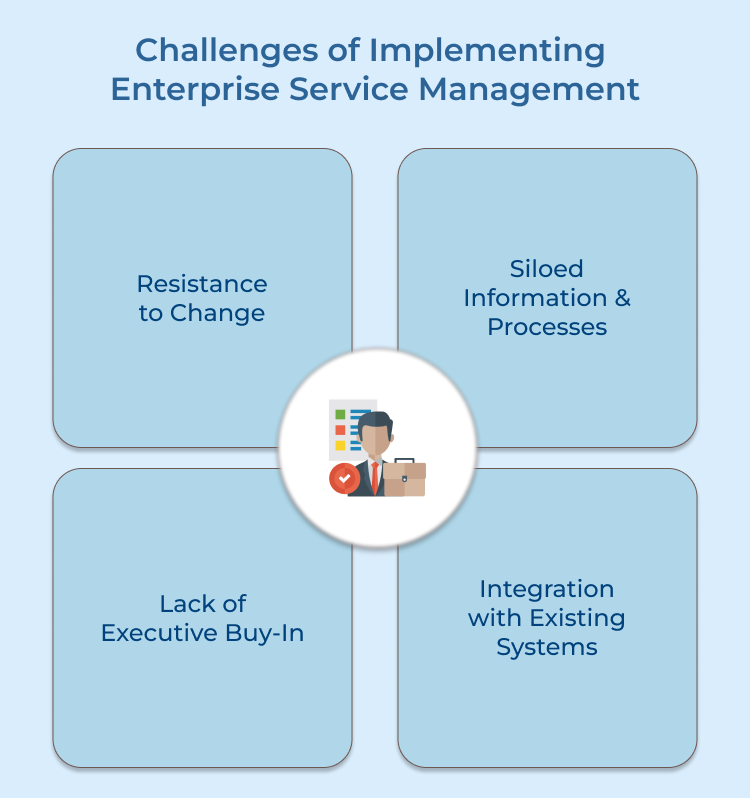1. Resistance to Change
One of the biggest challenges of implementing ESM is resistance to change from employees. People are often reluctant to adopt new technologies, especially if they perceive them as threatening their job roles or daily routines.
To overcome this challenge: Involve your employees in the decision-making process and communicate the benefits of ESM clearly. Supporting them throughout the implementation process also helps alleviate fears and resistance.
2. Siloed Information & Processes
Many organizations struggle with siloed information and processes, where different departments operate in isolation from each other. This hinders the successful implementation of ESM, as it requires a collaborative approach to service delivery.
To overcome this challenge: Organizations should promote communication and collaboration between departments. Implementing a shared service desk for managing services helps streamline processes as well as improve efficiency.
3. Lack of Executive Buy-In
Implementing ESM requires strong leadership and executive buy-in to drive the change throughout the organization. Without support from senior management, it can be difficult to secure the resources and funding needed for a successful ESM implementation.
To overcome this challenge: Engage with key stakeholders early on and make a compelling case for the benefits of ESM. Demonstrate how ESM aligns with the organization’s strategic goals and drive business value that secures executive buy-in.
4. Integration with Existing Systems
Another challenge of implementing ESM is integrating new service management tools and processes with existing infrastructure. Organizations may face compatibility issues, data migration challenges and complexities in aligning different systems.
To overcome this challenge: Conduct a thorough assessment of existing processes, identify potential integration points and develop a clear plan for implementation. Working with IT service management consultants help navigate the complexities of system integration for a smooth transition to ESM.
Examples of Enterprise Service Management
Enterprise Service Management (ESM) is a strategy that extends the principles of IT Service Management (ITSM) across the entire organization.
Uber
Uber is a technology company that has revolutionized the transportation industry by implementing ESM to manage its network of drivers, vehicles, and customers. By utilizing ESM processes, Uber is able to efficiently match drivers with riders, navigate traffic patterns and provide real-time updates on trip status.
Marriott International
As one of the largest hotel chains in the world, Marriott International has successfully implemented ESM to streamline its service management processes. It adopts a unified approach to service delivery which improves efficiency, reduces costs and enhances the overall guest experience.
Coca-Cola
Coca-Cola is another brand that has successfully implemented ESM to optimize its internal operations. Coca-Cola has been able to standardize processes, improve collaboration between teams and increase overall productivity, thanks to its unified service management approach.
Walmart
As one of the largest retailers in the world, Walmart has implemented ESM to enhance its customer service and operational efficiency. Applying service management principles to areas such as inventory management, returns processing and store operations helps Walmart to deliver a more seamless shopping experience for customers.
Toyota
The automotive manufacturer uses ESM to streamline its customer service operations and improve communication between different departments. By implementing a unified service management platform, Toyota has been able to enhance its overall customer experience.
Streamline your Process with Enterprise Service Management
Streamline your process with Enterprise Service Management (ESM) to maximize efficiency and productivity within your organization. By integrating IT, HR, finance and other departments under one centralized system, ESM allows for streamlined communication, collaboration as well as automation of workflows. The approach results in faster response times, reduces costs and improves overall customer satisfaction.
ESM lets you easily manage all services, identify areas for improvement and make data-driven decisions to enhance your business operations. Take advantage of ESM to simplify complex processes, increase transparency and ensure that your organization is running at its peak performance.
